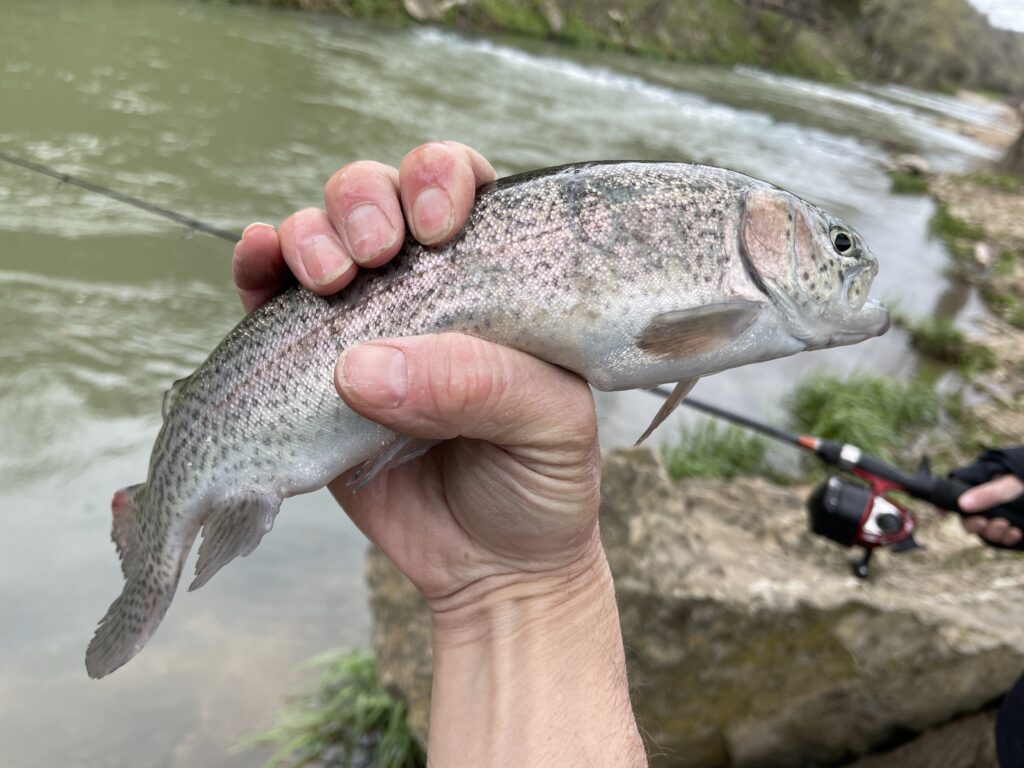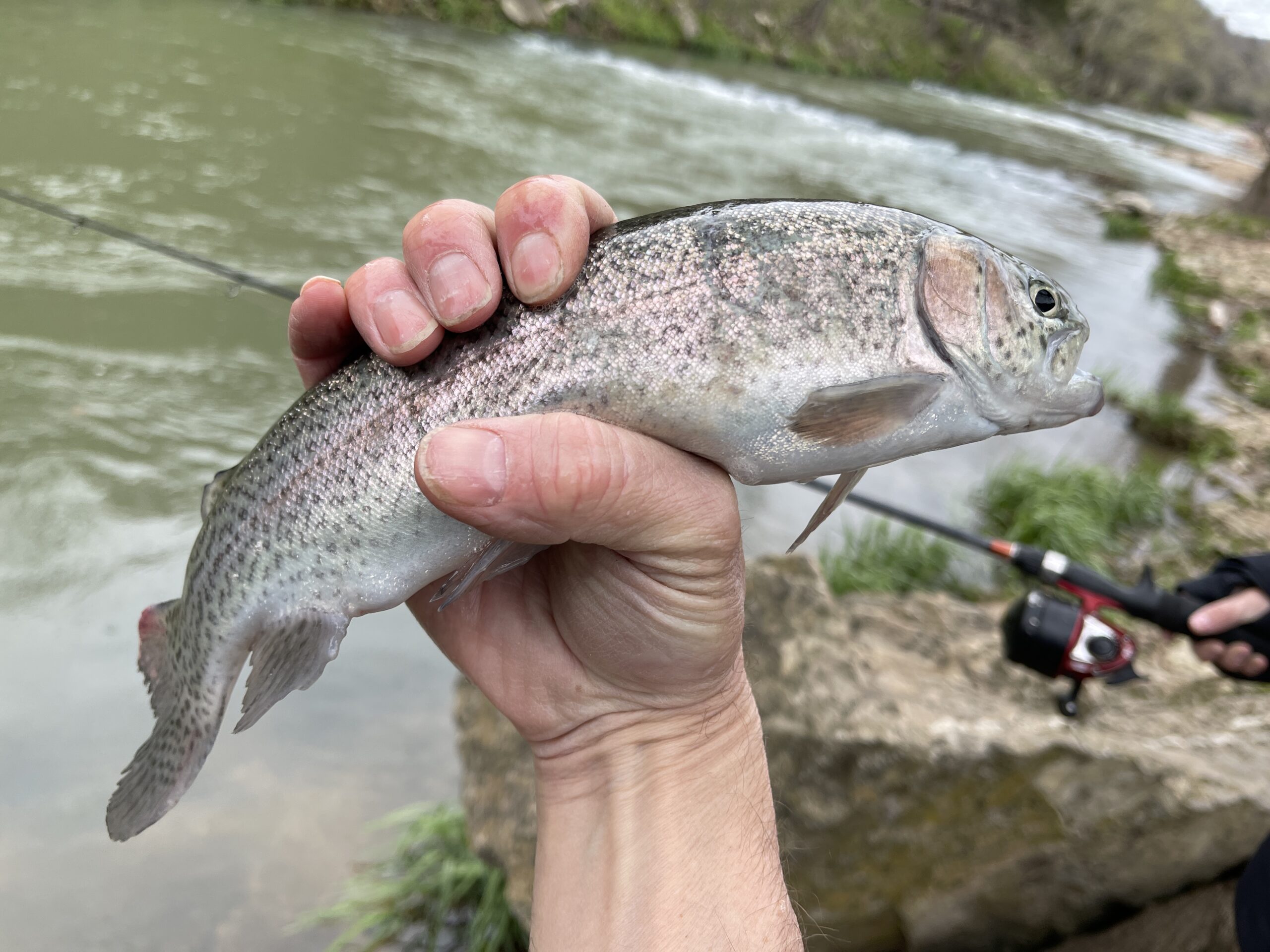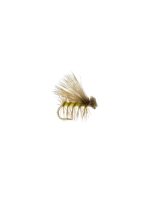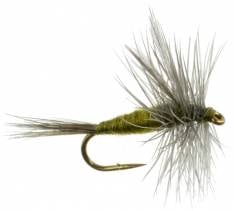
When you’re just starting out with fly fishing, it’s best to focus on a few basic fly patterns that are versatile and effective in a variety of fishing situations. Here are some of the most common flies that beginners should consider:
- Woolly Bugger: This versatile fly imitates a wide range of aquatic prey, including baitfish, crayfish, and aquatic insects. It’s a great fly for both still water and moving water, and can be fished with a variety of techniques.
- Pheasant Tail Nymph: This fly imitates a mayfly nymph, and is a great choice for fishing in slower moving water or lakes. It can be fished under an indicator or with a slow retrieve.
- Elk Hair Caddis: This fly imitates a caddisfly, which is a common insect in many bodies of water. It’s a great fly for fishing in faster moving water, and can be fished dry or wet.
- Adams: This classic dry fly imitates a variety of mayflies, and is a great all-purpose fly for fishing in slower moving water or lakes. It can be fished dry or wet.
- Hare’s Ear: This nymph imitates a variety of aquatic insects, and is a great all-purpose fly for fishing in slower moving water or lakes. It can be fished under an indicator or with a slow retrieve.
These five flies should give you a good starting point for your fly fishing journey. As you gain more experience and knowledge, you can begin to add more specialized flies to your arsenal.
When it comes to fly fishing for trout, the size of the fly is an important factor to consider. Here are some general guidelines for fly sizes that are commonly used for trout:
Dry flies:
For dry flies, sizes 14 to 20 are most commonly used for trout. However, smaller sizes may be necessary for selective fish or during hatches of smaller insects.
Dry flies are used to imitate adult aquatic insects, and are often used in slower moving water or still water. Here are some of the most popular dry fly patterns:
- Adams: The Adams is one of the most iconic dry flies and is used to imitate a variety of mayflies. It’s a versatile pattern that can be used in a variety of sizes and colors.
- Elk Hair Caddis: The Elk Hair Caddis is used to imitate adult caddisflies. It’s a great dry fly for faster moving water and can be fished with or without a dropper.
- Blue Winged Olive: The Blue Winged Olive is used to imitate adult mayflies, and is particularly effective during early spring and fall when blue-winged olives are hatching.
- Royal Wulff: The Royal Wulff is a high-floating attractor pattern that can be used to imitate a variety of insects. It’s a great choice for faster moving water.
- Stimulator: The Stimulator is a large, high-floating attractor pattern that can be used to imitate stoneflies or grasshoppers. It’s a great fly for fishing during hopper season.
These are just a few of the many dry fly patterns that are popular among fly fishermen. The best dry fly pattern to use will depend on the specific insects present in the water you’re fishing and the preferences of the fish you’re targeting
Nymphs:
For nymphs, sizes 12 to 18 are most commonly used for trout. However, larger sizes may be necessary in faster water or during high flow periods, while smaller sizes may be necessary in slower water or during low flow periods.
Nymphs are used to imitate the immature or larval stage of aquatic insects and are fished below the surface of the water. Here are some of the most popular nymph patterns:
Pheasant Tail: The Pheasant Tail nymph is a versatile pattern that can be used to imitate a variety of mayfly and stonefly nymphs. It’s effective in a range of water types and can be fished in a variety of ways.
Hare’s Ear: The Hare’s Ear is another versatile nymph pattern that imitates a variety of mayfly and stonefly nymphs. It’s particularly effective in slow-moving water and can be fished with or without a strike indicator.
Prince Nymph: The Prince Nymph is a popular attractor pattern that can be used to imitate a variety of nymphs. It’s effective in faster-moving water and can be fished with or without a dropper.
Copper John: The Copper John is a heavy nymph pattern that imitates a variety of insects, including mayflies and stoneflies. It’s particularly effective in faster-moving water and can be fished with or without a strike indicator.
Zebra Midge: The Zebra Midge is a small, simple pattern that imitates midge larvae. It’s effective in slow-moving water and can be fished in a variety of sizes and colors.
These are just a few of the many popular nymph patterns used by fly fishermen. The best nymph pattern to use will depend on the specific insects present in the water you’re fishing and the preferences of the fish you’re targeting.
Streamers:
For streamers, sizes 6 to 10 are most commonly used for trout. However, larger sizes may be necessary when targeting larger fish or when fishing in murky water.
Streamers are larger flies designed to imitate baitfish, leeches, and other larger aquatic creatures. They’re typically fished by stripping or retrieving them through the water to simulate a swimming or fleeing motion. Here are some of the most popular streamer patterns:
- Woolly Bugger: The Woolly Bugger is one of the most popular streamer patterns and can be used to imitate a variety of baitfish, leeches, and other aquatic creatures. It’s effective in a range of water types and can be fished in a variety of ways.
- Clouser Minnow: The Clouser Minnow is a popular pattern for targeting larger fish, particularly in saltwater environments. It’s effective in both freshwater and saltwater and can be fished with a sinking or floating line.
- Sculpin: The Sculpin is a pattern designed to imitate small, bottom-dwelling fish. It’s effective in fast-moving water and can be fished with or without a sinking line.
- Circus Peanut: The Circus Peanut is a large, heavy streamer pattern that can be used to imitate baitfish and other large prey. It’s effective in deep pools and can be fished with a sinking line.
- Deceiver: The Deceiver is a versatile pattern that can be used to imitate a variety of baitfish and other prey. It’s effective in both freshwater and saltwater and can be fished with a sinking or floating line.
These are just a few of the many popular streamer patterns used by fly fishermen. The best streamer pattern to use will depend on the specific prey present in the water you’re fishing and the preferences of the fish you’re targeting.
It’s important to note that these are just general guidelines, and the size of the fly you choose will depend on the specific conditions of the water you’re fishing and the behavior of the fish you’re targeting. It’s always a good idea to consult with local fly shops or other experienced anglers to get recommendations for specific fly sizes in your area.


